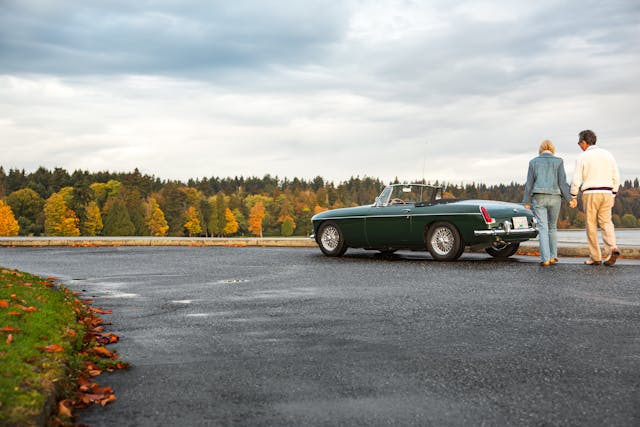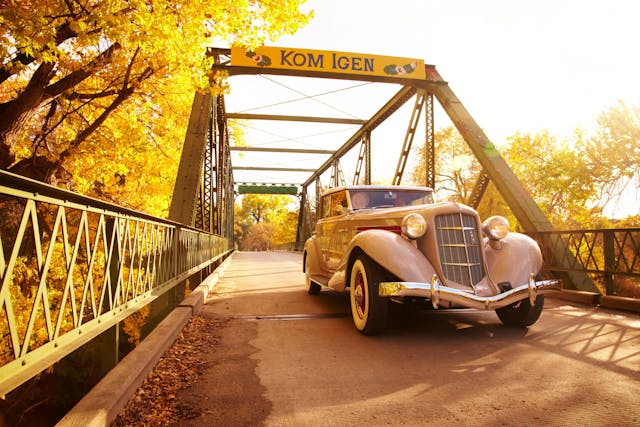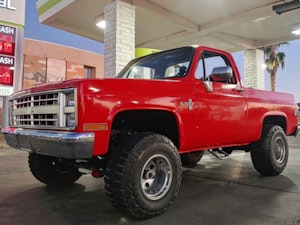Media | Articles
Enjoying your fall color tour? LBJ’s 1965 Highway Beautification Act aimed to keep it that way
For those of us who’ve been enjoying the fall colors in our classic cars, it might be difficult to imagine those tree-lined roads being anything less than beautiful this time of year. For that, we have the Highway Beautification Act to thank—at least in part.
Fifty-five years ago, on October 22, 1965, President Lyndon B. Johnson signed the Highway Beautification Act, a law which limits junkyards, billboards, and other outdoor advertising and unsightly clutter in rural, scenic, and agricultural areas.
The act, spearheaded by the First Lady, Lady Bird Johnson, also encouraged “scenic enhancement” by funding local efforts to clean up and landscape the green spaces on either side of the roadways.
“This bill will enrich our spirits and restore a small measure of our national greatness,” President Johnson said at the signing ceremony. “Beauty belongs to all the people. And so long as I am president, what has been divinely given to nature will not be taken recklessly away by man.”

The Highway Beautification Act, in the First Lady’s opinion, not only cleaned up the land bordering our roads, but it also served as an opportunity to create social unity. According to excerpts from her diary, “The subject of Beautification is like a tangled skein of wool. All the threads are interwoven—recreation and pollution and mental health and the crime rate and rapid transit and highway beautification and the war on poverty and parks … everything leads to something else.”
Marketplace
Buy and sell classics with confidence
Although she wasn’t alone in that opinion, the First Lady didn’t receive much support from business groups and advertisers, who fought against the measure. The proposal that LBJ ultimately signed into law is a diluted form of the original plan, and companies that were forced to remove their billboards received compensation from the government. In fact, today the non-profit environmental group Scenic America claims “the HBA is the only federal environmental regulation that requires taxpayers to pay the polluter to stop polluting. Loopholes have made the HBA little more than a Billboard Protection and Proliferation Act.”
Still, the Highway Beautification Act was the product of good intentions, and it required compromise to get it passed in the House of Representatives. After hours of squabbling—and with some very influential citizens in attendance—the proposal was finally agreed upon early the following morning.

According to the Washington Post, “Fifty or more congressional wives decked out in their party clothes watched from the gallery and must have wondered what kind of business their husbands had got into. The House does not take kindly to late sessions, and members hooted and yelled and shouted across the aisles …”
After the bill was passed in the House, on October 8, 1965, it went back to the Senate “for reconciliation of minor differences.” Congress completed its work on October 14 and then sent it to the White House.
President Johnson signed the bill into law on October 22, two weeks after having surgery to remove his gall bladder and a kidney stone at Bethesda Naval Hospital. At the signing ceremony, LBJ described the drive from the hospital to the White House, along the George Washington Memorial Parkway.
“I saw nature at its purest. The dogwoods had turned red. The maple leaves were scarlet and gold … And not one foot of it was marred by a single unsightly man-made obstruction—no advertising signs, no junkyards. Well, doctors could prescribe no better medicine for me …
“We have placed a wall of civilization between us and the beauty of our countryside. In our eagerness to expand and improve, we have relegated nature to a weekend role, banishing it from our daily lives. I think we are a poorer nation as a result. I do not choose to preside over the destiny of this country and to hide from view what God has gladly given.”













